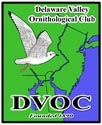From Wood to Wren
On my kitchen table there stands a small brown Carolina wren. It’s perched on a small pile of lichen and pale green moss. The tail juts straight up like a wren’s should although its wings are a little too short for an adult bird. If you peer closely you might notice that the feather barbs are kind of crooked and chaotic and the bird is missing the first toe of each foot, but nevertheless, it’s definitely a wren.
Not too long ago it looked like a crooked chunk of wood with pencil marks on it. So I’m proud of the fact that it now looks like a little bird, even like a wren.
The last weekend in October saw the transformation of my chunk of wood into a wren when Ernie Muehlmatt hosted one of his bird carving workshops down in Salisbury, Maryland.
Ernie is a 3-time World Class Wildfowl Carving champion and teaches his art throughout the year in a variety of locations. Easy going and gifted with a good sense of humor, Ernie made the atmosphere of the workshop comfortable and inviting for a first-timer like me.
Ernie at work on his own wren.
It was also a blessing that two of Ernie’s long-time bird-carving friends attended this workshop and were willing to guide me along if they happen to glance over and saw that my wren could be on its way to becoming an avian Frankenstein.
We used tupelo wood, which has no definite grain pattern and is soft and easy to work with. We started with a “blank”, a chunk of tupelo with excess wood already taken off.
Someone in class said that the basic theory of carving is like that joke about how to make an elephant; just take away everything that isn’t part of the elephant. We all laughed because it’s basically true.
We started with a “blank” and beginning with the bill, worked back along the wings to the tail.
So far, so good. But I thought of all those bird blanks that are going to get “wasted” if I intend to get into this new hobby. Kind of like all that film and money I blew back in the days before digital cameras while I was learning photography.
While bird blanks can be ordered from bird carvers, they are expensive enough that if you make lots of mistakes it could add up. I can save a little money buy getting my own saw. A band saw is what a lot of carvers use, but I don’t have the room for one, or the desire to donate any fingers to the cause, so I will most likely be getting a jigsaw later on. See, now I’m hooked and am thinking about what I’ll need to get in order to indulge in this hobby. Santa sure is going to be busy this year.
On the Saturday of our workshop weekend we took our lunch at the Ward Museum of Wildfowl Art where Ernie led us on a tour of the galleries. If you are ever in SE Maryland a stop at the museum would be time well spent. It features early decoys carved by the Ward brothers, Lemuel and Steven, who made decoy carving into an art and more or less began the idea of bird carving into the art form that it is today.
One of the galleries here features a collection of the winning pieces from the previous year’s World Class Championship. These are some amazing works. Every component in the piece–the branches, the leaves, the pine needles, and rocks are carved from wood as well as the main bird. There are birds in mid-wing flap or mid-attack upon another bird who is poised in almost-escape, which are attached to their base by the merest feather or talon toe, giving the illusion of total free flight and movement. Each feather is flared or uplifted in absolute life-like detail, not painted but carved.
The joke about making an elephant popped into my head as I wandered among these carvings. Just remove what doesn’t belong and voila! But remove too much or what does belong, and there’s no slapping back of clay or rubbing out with an eraser. Just one mistake and entire piece that may have been weeks, months of long hours and excruciating concentration are for nothing.
Okay. Back at our workshop my little wren didn’t seem so overwhelming and I felt a bit more inspired.
So, once our birds had their basic shape we then carved the legs and feet and put the eyes in. That’s when I developed an affection for my little guy because now it could look out onto the world. Now it could look back at me.
A little wren looks content as it gets some wings.
Our birds then needed a “habitat” to perch on. So we carved lichens, rocks, and even a little toadstool.
Moss is a common feature of carving habitats and requires endless drilling of holes to accomplish the look. In the photo below I have barely started on my moss but you can see my uneven and crudely carved lichen.
After the carving there are more stages involved. Etching, stoning, and burning of feathes and markings. Then a laquering, application of Gesso, and a series of color washes, which I am still working on. However, below you can see the current stage of my wren as it poses proudly at the edge of my garden.
Once the color wash is completed and cleaned up in some areas I will post a finished photo.
And no, sorry, my piece “Wren on Moss” is not for sale, but I’m flattered for the offers.
The puzzle below is of a Great Blue I digiscoped at the pond behind the Ward Museum. More pictures from the workshop are available for viewing at http://www.flickr.com/photos/tahdin.















